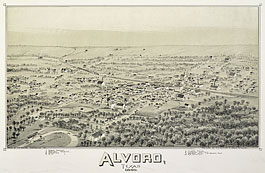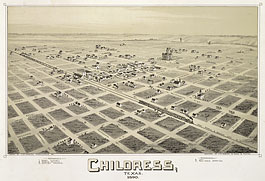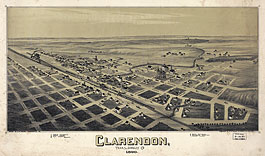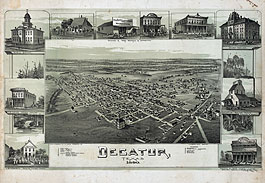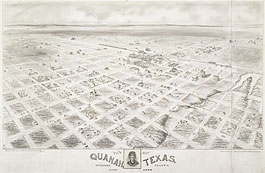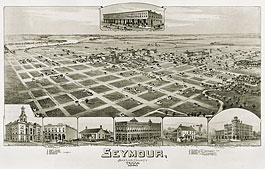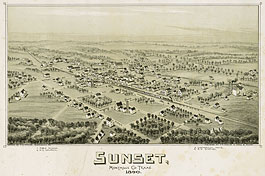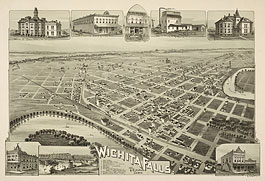Alvord in 1890
The Fort Worth and Denver City Railway reached Alvord, about 13 miles from Decatur, early in 1882 as a part of the company’s pell-mell rush to meet the construction crews from Denver in the Texas Panhandle. The small Wise County town had begun life as Nina, a tent city on the railroad about fifty miles north-northwest of Fort Worth. It was named Alvord in honor of the president of… [More]
Childress in 1890
Traveling along the Fort Worth and Denver City Railroad, Thaddeus Fowler reached Childress, in Childress County a few miles south of the Prairie Dog Town Fork of the Red River. Childress County had been organized during the 1880s as the railroad was built through the region. Childress City and Henry, two fledgling communities about four miles apart, competed for county seat, and Childress City won the election. This meant… [More]
Clarendon in 1890
Clarendon, the county seat of Donley County just east of the Llano Estacado, is the westernmost city in Texas that Fowler documented. The city was founded as a religious colony in 1878 and named either after Clara, the wife of Methodist minister and founder, Lewis Henry Carhart, or perhaps after Clarendon, England, to honor an English firm that backed Carhart’s endeavor. Carhart purchased 343 sections of land in the… [More]
Decatur in 1890
The Fort Worth and Denver City Railroad, linking Fort Worth with West Texas and finally with Denver, provided Thaddeus Fowler the opportunity to document the massive movement of population into West Texas during the last two decades of the nineteenth century. The use of barbed wire and windmills had rendered semi-arid West Texas somewhat less formidable, and farmers using relatively new dry-land techniques had brought cotton to the Panhandle… [More]
Quanah in 1890 (drawing)
Like Henry Wellge’s drawing of Honey Grove, this drawing by Fowler of Quanah is very rare. Once completed, such drawings were then sent to a lithography studio, where artists translated them into multiple lithographic prints. In most cases, the one-of-a-kind sketches then disappeared. Along with its derivative lithograph, this drawing has added historical importance because Quanah was struck by both flood and fire the year after Fowler finished his… [More]
Quanah in 1890 (lithograp)
The fact that Quanah was named for the Comanche chief Quanah Parker testifies to the centuries of Indian presence in the area that became Hardeman County in 1858 and explains why there was little Anglo-American settlement in the area until the 1880s. That began to change in 1884 as the Fort Worth and Denver City Railway worked on the road beyond Wichita Falls. The railroad surveyors laid out Quanah… [More]
Seymour in 1890
The Seymour that Thaddeus Fowler depicted in 1890 seemed to be a prosperous county seat with more large, stone buildings than such a small community, which was not even listed separately in the census of 1890, might justify. The substantial buildings resulted from a boom that coincided with the construction of the Wichita Valley Railroad to Seymour, located on the Brazos River, in 1890. The boom began when the… [More]
Sunset in 1890
Sunset was among the communities that benefited from the construction of the Fort Worth and Denver City Railroad through northeast Texas. Located about eight miles northwest of Alvord, Sunset dates from the 1870s, when a few settlers arrived from Denton County. When the FW&DC built its line through the county in 1882, several residents moved to the site of Sunset to be near the tracks, and the small community… [More]
Wichita Falls in 1890
The initial destination goal of the Fort Worth and Denver City Railroad as it built northwestward from Fort Worth toward the Texas Panhandle was Wichita Falls. The small community, which had attracted a scattering of settlers throughout the 1870s and established a post office in 1879, encouraged the railroad to build through the developing business district by donating land. The first construction train, with a single passenger car attached… [More]











